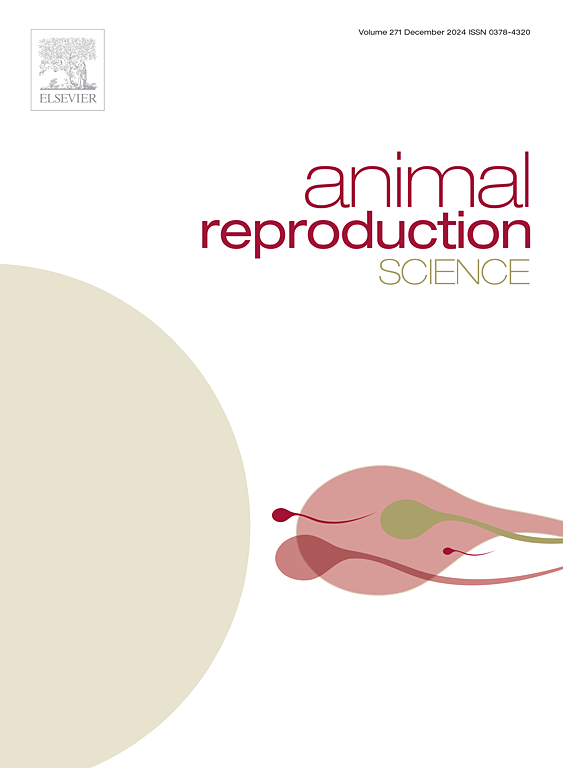Reproductive strategies of domestic Betta splendens as a foundation for developing breeding programs for Indonesia’s endangered wild species
IF 3.3
2区 农林科学
Q1 AGRICULTURE, DAIRY & ANIMAL SCIENCE
引用次数: 0
Abstract
Domesticating Betta splendens has yielded extensive insights into reproductive biology, breeding requirements, and parental care behaviors while also providing essential guidance for conserving endangered Indonesian wild Betta species. Adapted to fragile, acidic blackwater habitats, wild Betta species exhibit unique reproductive strategies, notably bubble nest building and mouthbrooding, which share both similarities and differences with domesticated strains. These distinct behaviors create both opportunities and challenges when applying breeding techniques developed for domesticated species to their wild counterparts, necessitating careful consideration of ecological requirements, genetic diversity, and reproductive dynamics. This review synthesizes findings on domestic B. splendens reproduction, emphasizing their relevance for developing effective ex-situ breeding protocols for wild Betta species. Additionally, it explores key factors, including habitat simulation, environmental enrichment, species-specific breeding system design, and genetic management, all essential for ensuring reproductive success while maintaining ecological and genetic integrity. Furthermore, community engagement and aquarist contributions are highlighted as vital components of sustainable conservation efforts. Integrating these approaches is crucial for safeguarding the rich Betta population biodiversity in Indonesia via responsible captive breeding and habitat restoration.
国内锦绣斗鱼的繁殖策略为印度尼西亚濒危野生物种的繁殖计划奠定了基础
驯化斗鱼对生殖生物学、繁殖要求和亲代照顾行为产生了广泛的见解,同时也为保护濒危的印度尼西亚野生斗鱼物种提供了必要的指导。野生斗鱼适应于脆弱的酸性黑水栖息地,表现出独特的繁殖策略,特别是气泡筑巢和口育,与驯化品种既有相似之处,也有不同之处。在将驯化物种的育种技术应用于野生物种时,这些不同的行为既创造了机遇,也带来了挑战,需要仔细考虑生态要求、遗传多样性和生殖动力学。本文综述了国内外关于锦绣斗鱼繁殖的研究成果,强调了其对制定有效的野生斗鱼迁地繁殖方案的重要性。此外,它还探讨了关键因素,包括栖息地模拟、环境富集、物种特异性繁殖系统设计和遗传管理,这些都是确保繁殖成功同时保持生态和遗传完整性的关键。此外,社区参与和水族馆的贡献被强调为可持续保护工作的重要组成部分。综合这些方法对于通过负责任的圈养繁殖和栖息地恢复来保护印度尼西亚丰富的斗鱼种群生物多样性至关重要。
本文章由计算机程序翻译,如有差异,请以英文原文为准。
求助全文
约1分钟内获得全文
求助全文
来源期刊

Animal Reproduction Science
农林科学-奶制品与动物科学
CiteScore
4.50
自引率
9.10%
发文量
136
审稿时长
54 days
期刊介绍:
Animal Reproduction Science publishes results from studies relating to reproduction and fertility in animals. This includes both fundamental research and applied studies, including management practices that increase our understanding of the biology and manipulation of reproduction. Manuscripts should go into depth in the mechanisms involved in the research reported, rather than a give a mere description of findings. The focus is on animals that are useful to humans including food- and fibre-producing; companion/recreational; captive; and endangered species including zoo animals, but excluding laboratory animals unless the results of the study provide new information that impacts the basic understanding of the biology or manipulation of reproduction.
The journal''s scope includes the study of reproductive physiology and endocrinology, reproductive cycles, natural and artificial control of reproduction, preservation and use of gametes and embryos, pregnancy and parturition, infertility and sterility, diagnostic and therapeutic techniques.
The Editorial Board of Animal Reproduction Science has decided not to publish papers in which there is an exclusive examination of the in vitro development of oocytes and embryos; however, there will be consideration of papers that include in vitro studies where the source of the oocytes and/or development of the embryos beyond the blastocyst stage is part of the experimental design.
 求助内容:
求助内容: 应助结果提醒方式:
应助结果提醒方式:


